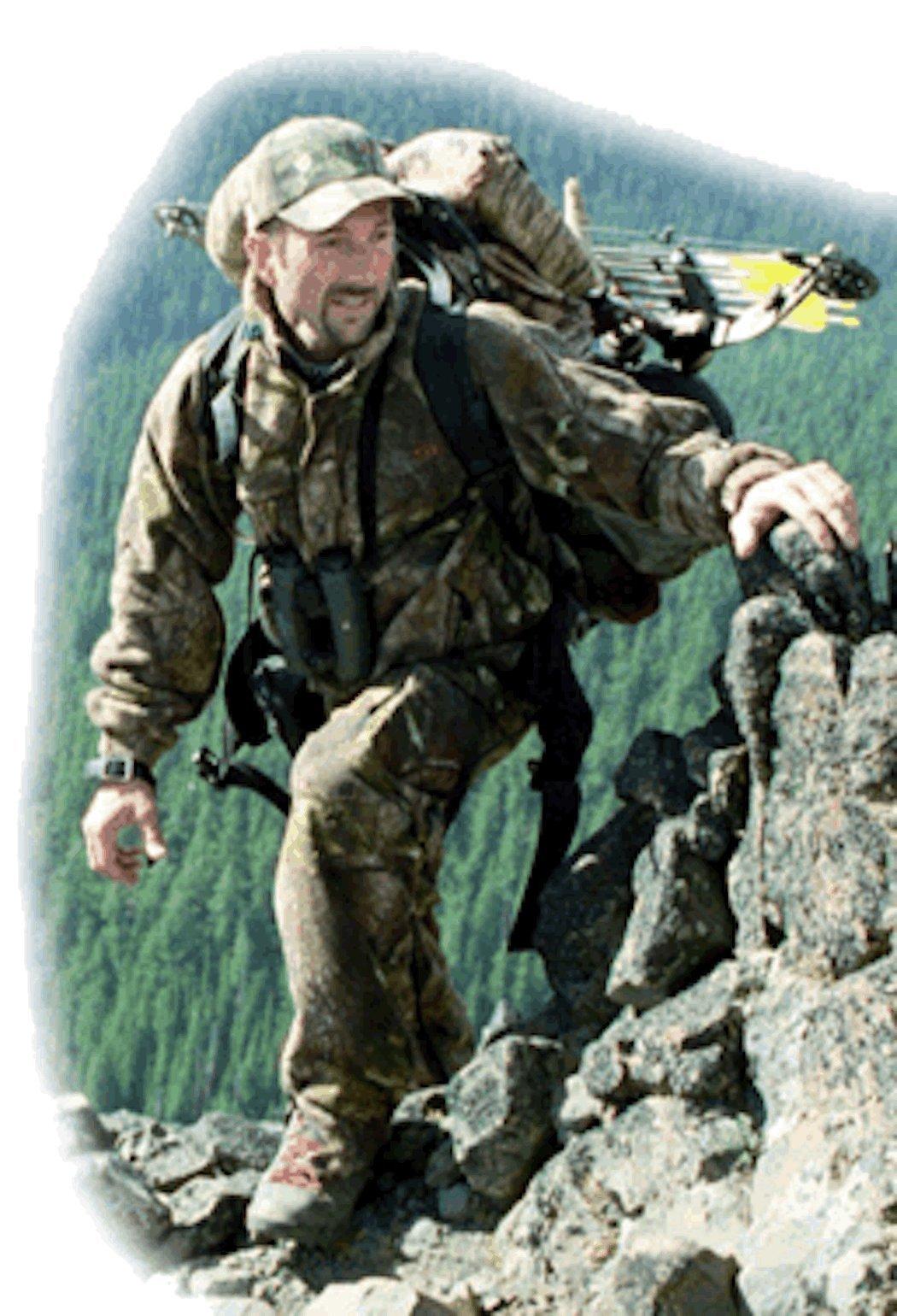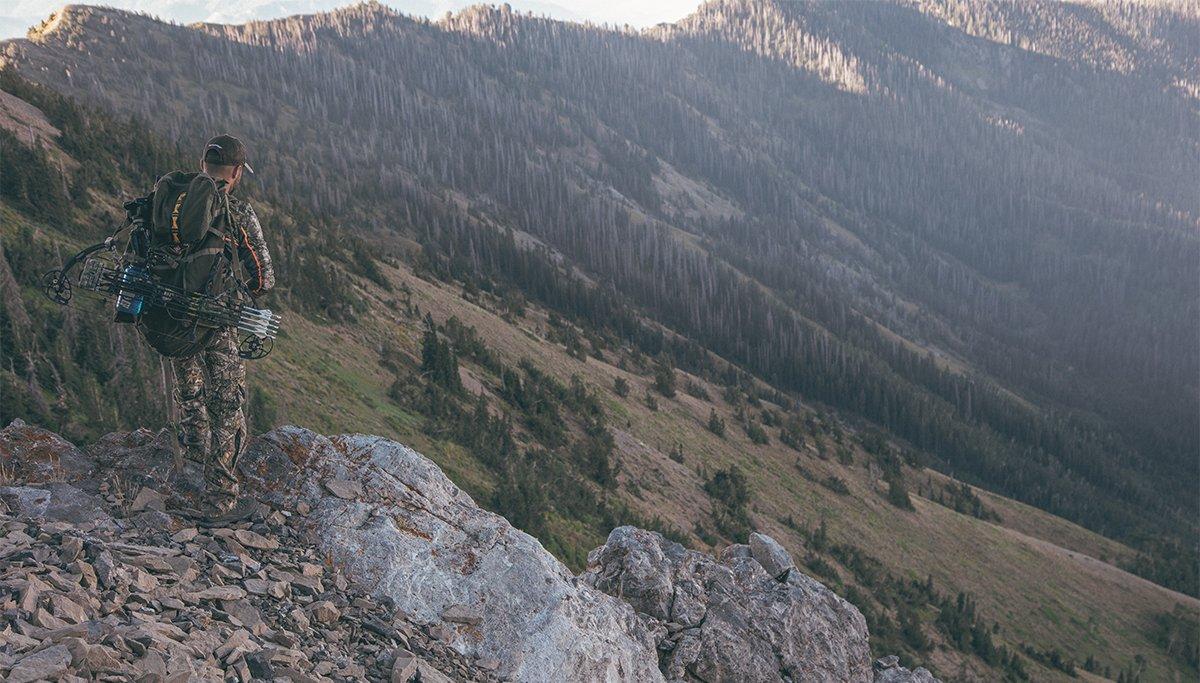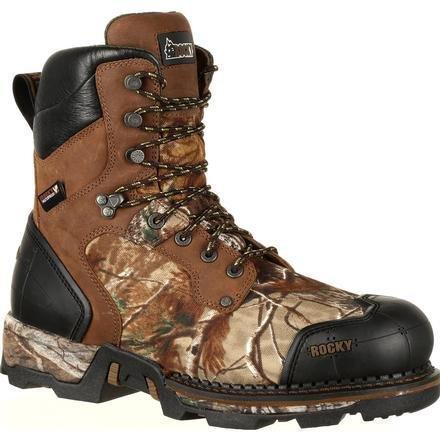Do You Stay in Shape for Bowhunting?
When first reading this phrase some 10 or more years ago, it immediately held special meaning to me. These few sentences perfectly sum up what I live to do -- bowhunt the West's most rugged and remote backcountry for trophy-class animals. The challenge of getting within bow range of big, mature bulls or bucks is immense. Here in my home state, success rate on elk hovers around 10 percent and for deer the average is 20 percent. That equates to about one elk every 10 years and a deer every five -- that average includes any elk and any deer, not just the mature animals I try to focus on. If we had the numbers on only record-book animals, most guys would probably throw in the towel thinking, "What's the point?"
While these numbers don't look real good, they are just numbers. This is an average. Most of us bowhunt because we want a challenge. Like many of you, I love having the odds stacked against me as it just makes me work that much harder. To get above-average bowhunting results a guy must put out above average effort. For me personally, average success won't cut it. I want more, which is why I eat, live, breath and sleep bowhunting and like my favorite phrase says, "I will accept no excuses and produce only results." To get this, I work toward my goals as hard as I can with tunnel-visioned focus. Many guys will admit they could work harder and prepare more and that right there is the difference.
To successfully hunt the backcountry of the West, you must be in excellent physical condition. I don't mean hitting the Stairmaster a couple times a week. This is what a lot of guys do. Remember, we are talking next level. Pushing-the-envelope-type preparation. I run, lift, do adventure races, etc. If it involves pain and endurance, sign me up. I will do it just because it might help in making me a more successful bowhunter. I have run marathons, half marathons and countless 10K races on the belief it will make me harder, tougher and leaner.
Getting Into Shape
Prior to the beginning of this most recent bow season, I was running at least 10 miles a day, five days a week for months in an effort to get my body ready for life in the mountains chasing elk and deer that, we must remember, call this country home. They live in this harsh country day in and day out and will never get fatigued or frustrated or desperate. They are concerned with one thing -- staying alive, and they're good at it.
Rocky Hunt Maxx 800G Insulated Boot in Realtree Xtra
What it comes down to then is survival of the fittest. The recipe for success is a fairly simple one. This isn't brain surgery but at the same time there are no sure-fire shortcuts that will guarantee success. The way I see it, if I can hunt my absolute hardest over a 10-day period in good, remote elk and deer habitat, I will be successful. This can be easier said than done, though. Where all the preparation and superior conditioning pay off the most is at the end of a long hunt. By this time, most hunters are beat down and depending on what has happened in the days prior, they're probably feeling a little desperate as the days pass by, too. That was the case for me this year in Oregon.
It was the sixth day of the hunt and I had just missed a good 4x4 Pope & Young mule deer. I was depressed as it had been very warm and the opportunities few, which made missing that deer very hard to stomach. I thought I was above such things after going the previous two seasons without missing an animal. But, as we know, there is nothing more humbling than bowhunting. It mattered little to that buck that I was on a roll or that we really needed the kill because the camera was rolling and the footage was mandatory to make a TV show.
In bowhunting, you have to prove yourself each and every time out. No resting on laurels here. This can be draining and I will tell you after that arrow ricocheted off the rocks and that hard-earned opportunity slipped through my grasp, I was feeling a little pressure to produce. Shrugging off the miss, I knew that if given a shred of opportunity again, I would undoubtedly capitalize. I truly believed that I had worked too hard to get shut out.
A half hour after that miss, my cameraman, Nate Simmons, and I jumped a buck we had glassed that morning. When the big 4x4 hesitated for a moment in bow range, I dotted him with a perfectly placed arrow as the never-blinking eye of the camera rolled. The P&Y buck went about 100 yards before piling up. The next day, No. seven, I arrowed a good 5-point bull, which topped off my best wilderness double ever. From the worst hunt to the best just like that. But, the key was staying focused and being ready when opportunity knocked. Ready mentally, and ready physically.
Passing the Tests
The first test we do is the Lactic Acid Profile, which determines Lactate Threshold, i.e. pretty much, the point of no return when running. LT is the best predictor of endurance performance and can be improved greatly with proper training. LT data is gathered by examining blood samples taken every four minutes of an increasingly difficult treadmill run that lasts for nearly an hour. Mine suggested that I could run around 6-minute-45-second miles, with a heart rate of 164 beats per minute for hours; perfect marathon or ultra-marathon pace. By speeding up to say, 6-minute-10-second miles with a heart rate of 170, I would be running on borrowed time. This pace could only be sustained for a 10K or maybe a half marathon, which was consistent with my history. This past summer, I ran a 10K in 38:16, which is exactly 6:10's. At the end of the run, I was pretty well spent.

The best way to improve your LT is to train at LT or slightly above one to two times a week for a four- to eight-week period. A sample workout would be to run at or above your LT, or where it feels like you're really pushing it, for 20 minutes. Then rest for 10. Then do another 20 minutes hard. Rest for 10 more minutes. Then do one final 20-minute interval. Whatever the interval is, rest for half of that time. So if you are running hills at or above LT and you run for 12 minutes, rest for six. Remember, this workout it has to hurt a little.
So far as body composition goes, my body fat percentage was 7.8 percent. I weighed in at 158 lbs. with a total fat body weight of 12.4 lbs., which leaves a lean body weight of 145.6 lbs. This is about where I want to be by the time hunting season rolls around; gotta be lean in order to hunt harder, further, longer and more efficient. When compared to our Backpacker Magazine Eight, I got beat by only one very lean guy. On average, the men were at 9.8 percent body fat and the women were at 17.3 percent. (For reference, the desirable percentage of body fat for men 30 to 39 years of age is 12-16 percent and for women in the same age bracket it is 20-24 percent.)
In another test, the VO2 max is the fastest rate at which your body can make energy using oxygen. The higher your VO2 max, the better your potential for endurance performance. Hong Kong Trailwalker winner, Stephanie, tallied a VO2 max of 49 where as I got 53.5. (By comparison, a typical man in his 20s or 30s scores around 40.) VO2 max can improve with training 5-20 percent, but is limited by genetic potential.
I was surprised to learn that you don't need to kill yourself getting in shape for hunting. Neal, who has tested some of the world's greatest athletes, says that most of their workouts are done at "conversation" pace. While jogging go at a pace in which you can carry on a conversation. "Even many Olympians," says Neal, "Workout at what might be considered a comfortable pace 90 percent of the time. Hard is not always better." Just as the Backpacker test indicated, the fitness benefits of backpacking rival those of much more intense sports. You don't have to be a world-class athlete to build up amazing endurance. Neal suggests doing long, comfortable workouts (45 or more minutes) three or four days a week and then one day of the week do a hard, faster paced, workout.
I supplement long runs with shorter, more demanding hill workouts, weights and mountain biking. For me, variety is the key. Granted, I run a lot and love the feeling I get during long treks, but sometimes these workouts leave me with aching knees because of all the pounding. I can't just not work out though, so I switch it up and lift or bike.
One key fact to consider before heading out for a quick 10-mile run to begin the exercise regimen is first and foremost to set realistic goals. If you've been doing nothing recently go for a brisk walk. There's no point jogging if you can't go for a brisk walk. But of course, many people do and I have made this mistake myself a number of times. The problem by going overboard right out of the gate, is you get too sore, which hurts and could cause you to stop your workout routine before it gets started. Get in shape first, then work out hard and work out smart. When running around the mountains, success is much more likely if you can concentrate on killing a buck or bull as opposed to killing yourself.
Don't Miss: The Best Setup for Bowhunting Elk
Editor's note: This was originally published October 9, 2003.
Are you a bowhunter thirsty for knowledge? Check out our stories, videos and hard-hitting how-to's on bowhunting.









